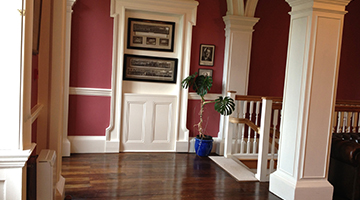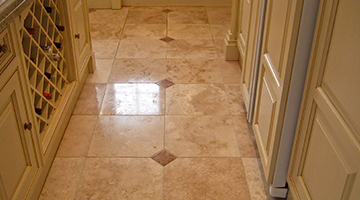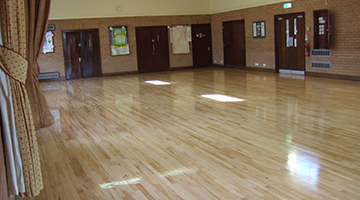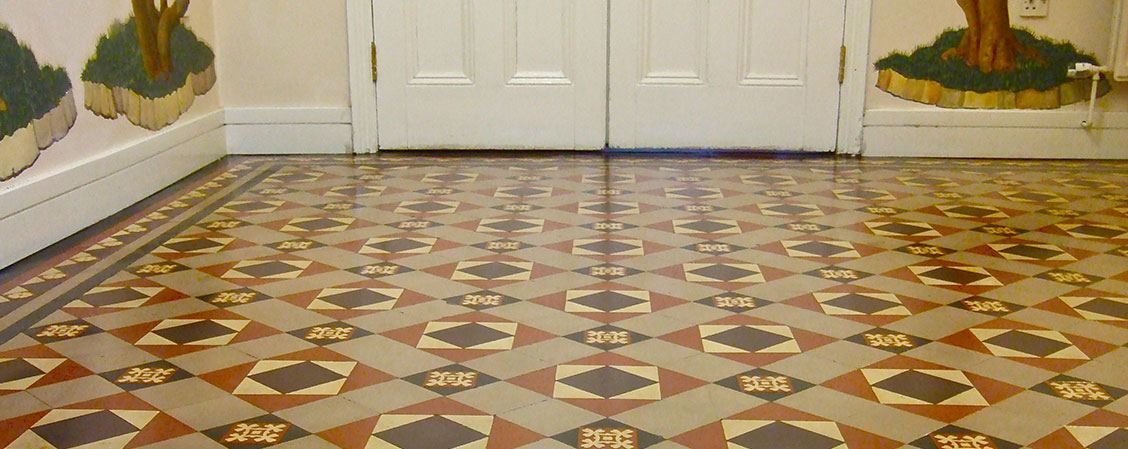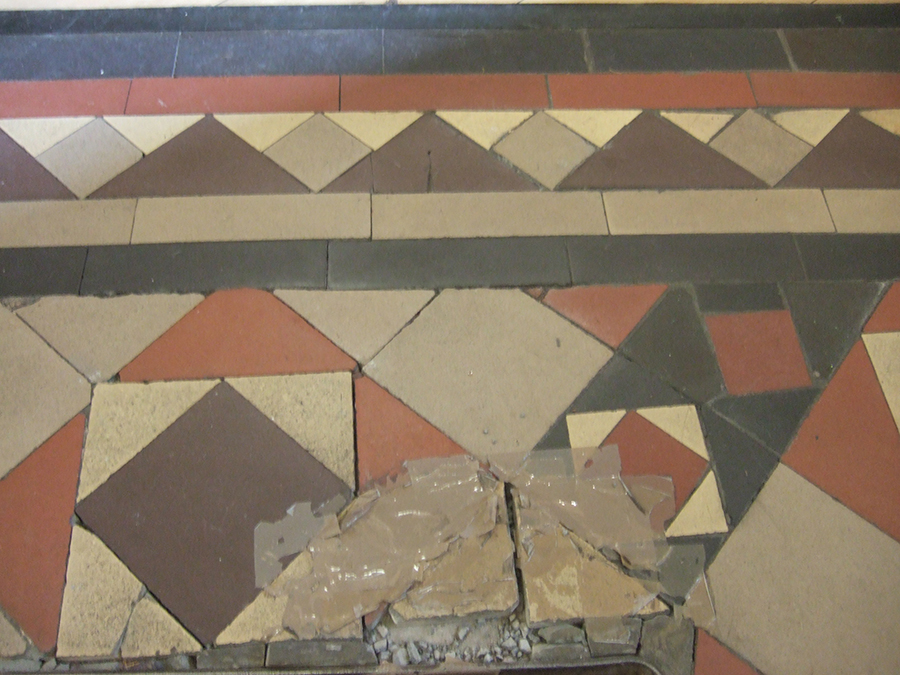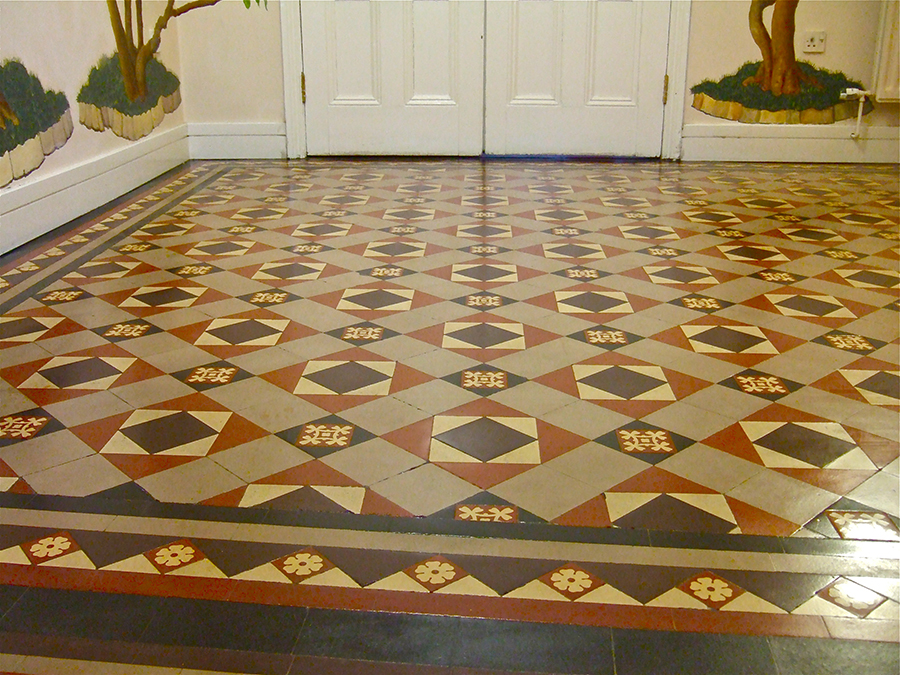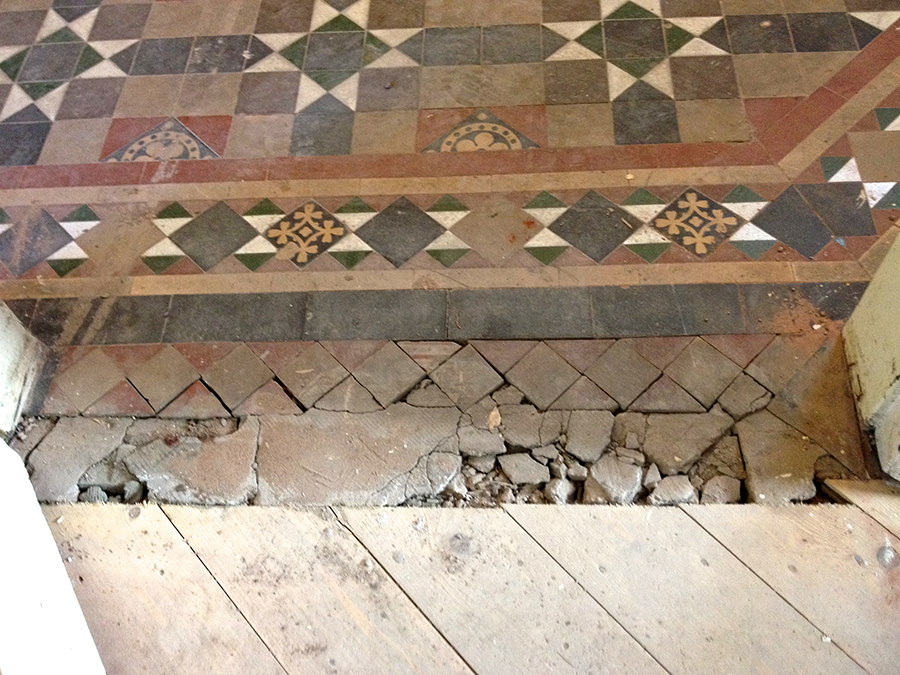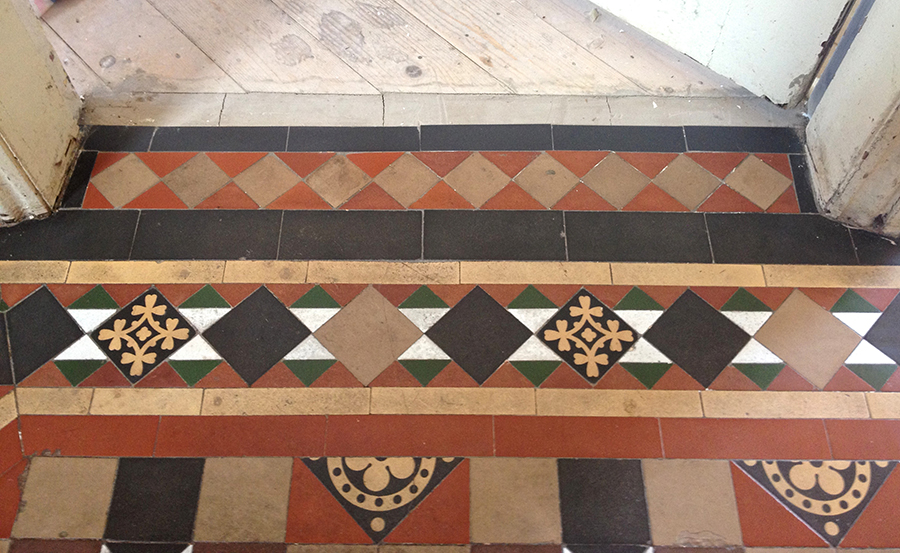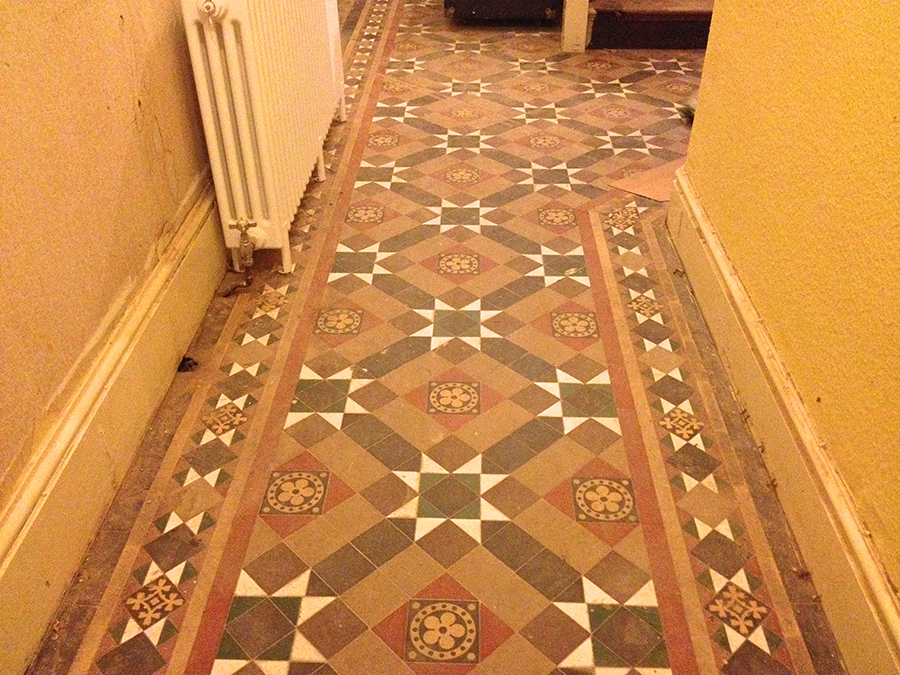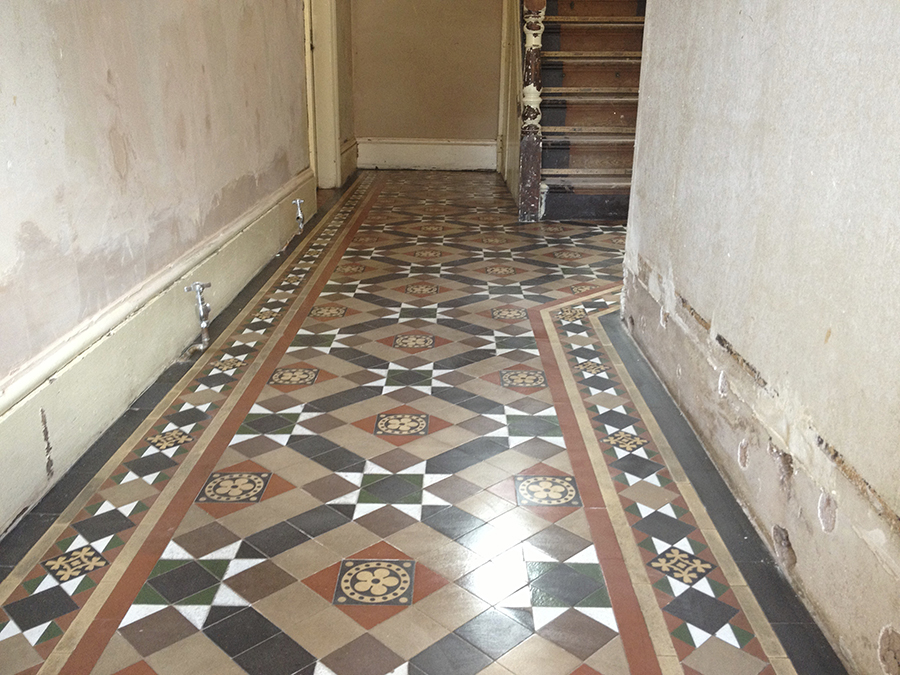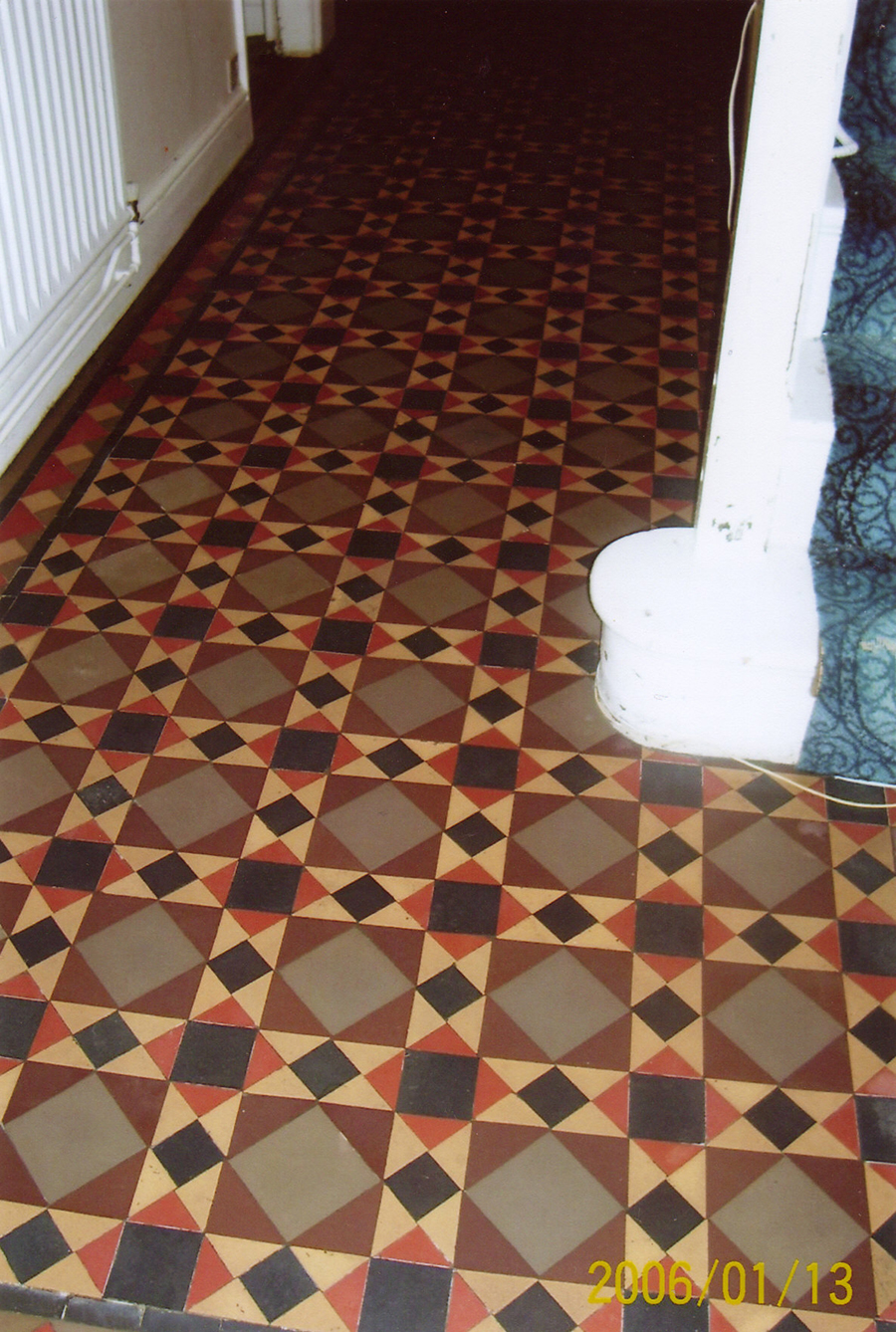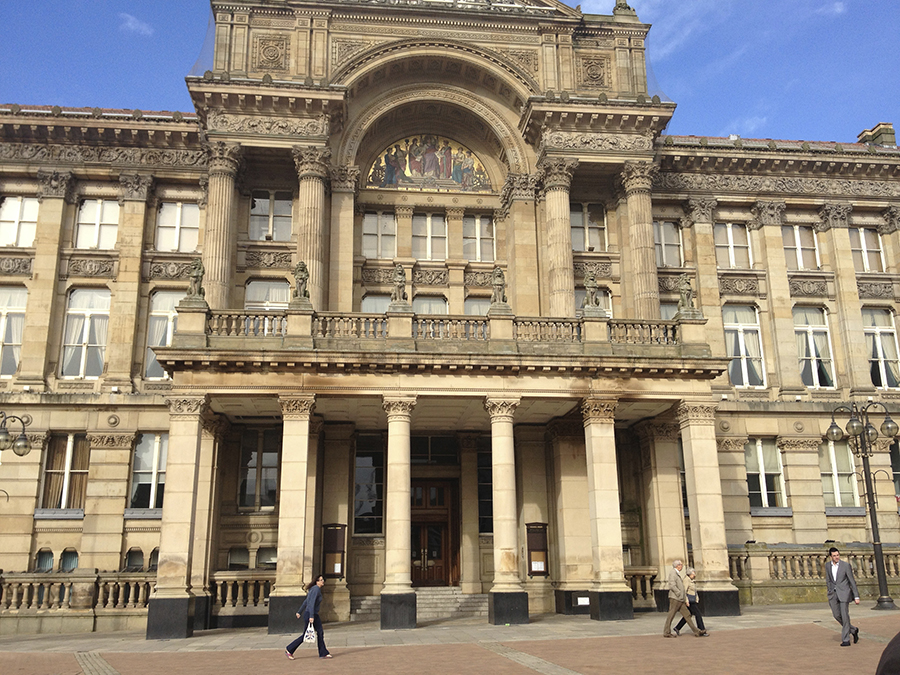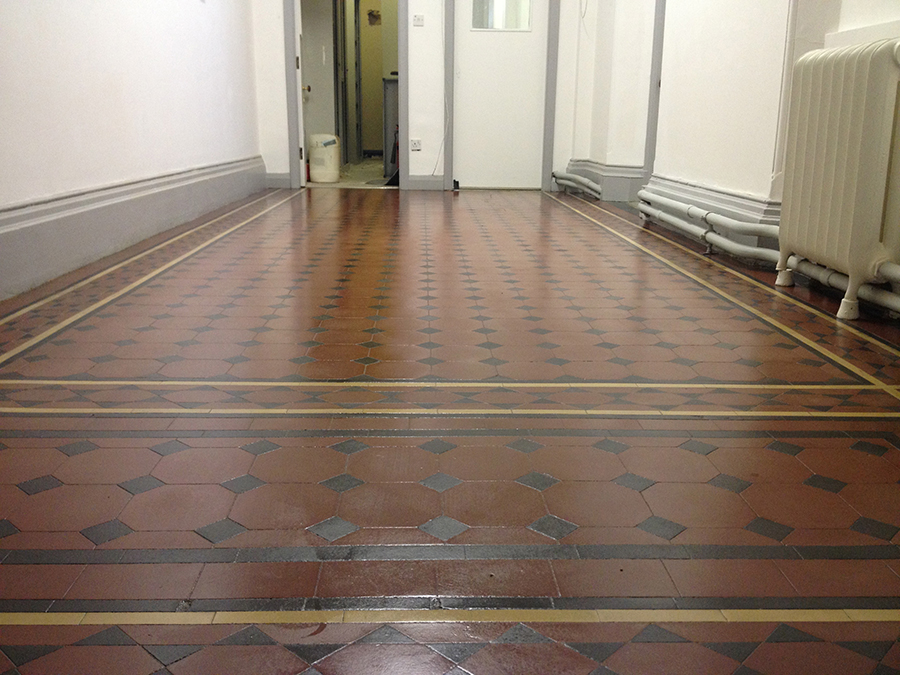Victorian Geometric tile restoration
We can provide the full range of Victorian geometric tile renovation repairs and refinishing:
- Replacing badly damaged tiles with our carefully selected reclaimed Victorian tile equivalent tiles.
- Re grouting - either replacing missing grout or whole floor re grouting.
- Levelling of floor tiled areas - removal of tiles, renewal of the substrate before reinstating the tiles.
- Removal of old screed and other unwanted coverings from the tiles.
- Stain and contaminate removal from the tiles.
- Application of appropriate micro porous seals and finishing.
- Provide you with full after care instructions
What to expect:
Here are just a few examples of our work –after 20 years spent restoring these floors we have accumulated a vast knowledge base and library of photographs showing the results of our work. We have many more examples of restored Victorian tiled floors that we are able to send you; and we are often able to send you a very close example of your own floor!
Oxford Victorian period property:
Stratford upon Avon Victorian geometric tiled floor
Victorian quarry tiles were laid on either lime mortar or ash with bare soil directly underneath; surprisingly after all these years the majority of Victorian floors survive with the original substrate still in a structurally sound condition; this is a testament to perhaps the greatest era of building in Britain!
There are however cases where substrate failure will cause loosening and/or damage to the tiles and renewal of the under floor is the only option. Substrate movement is most commonly caused by building settlement but also by the water saturation of the under floor from either a high underlying water table or direct flooding; other possible causes are earth tremors or just a general degradation and loss of strength of the under floor material.
In most cases the lifted tiles are salvageable and can be re used in the repair afterwards; tiles adhered with the original soft lime mortar can be cleaned and reused; however in cases where the tiles have been ‘patch’ repaired with modern cementations adhesives then it will not be possible to clean these tiles and replacements will need to be sourced. As always maintain breathability of your old floor to avoid underfloor moisture damage.
Same floor with less tile damge in the Hallway
Malvern geometric Victorian tiles covered with old bitumen
Before
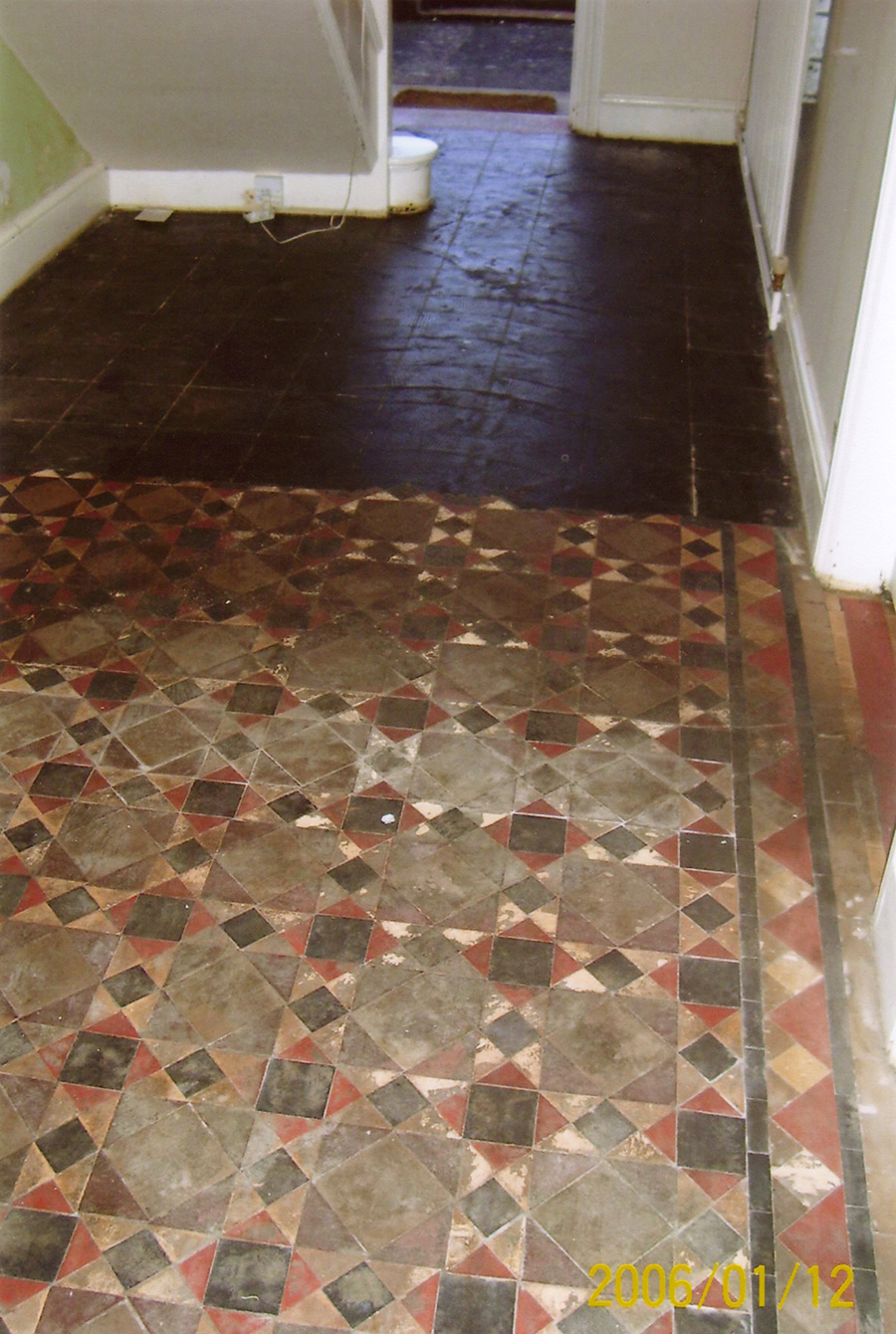
This floor had a thick layer of bitumen across the tiles, which was most probably applied in the 1960’s in a vain attempt to prevent damp penetration through the tiles.
Before
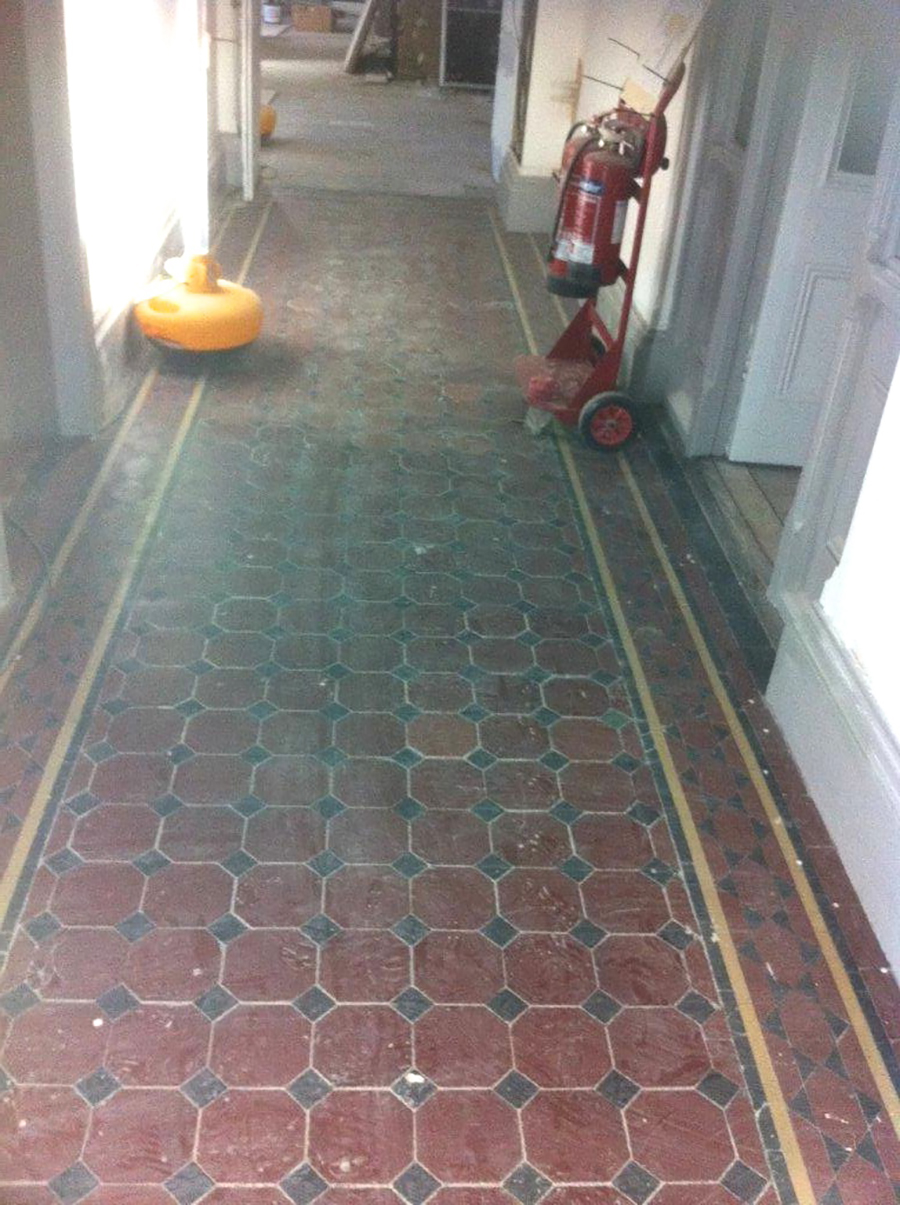
As part of extensive renovations to this grade 2 listed building we were asked to carryout the refurbishment of the Victorian geometric tiled floors of the Mayors offices at the Birmingham City council house building.
As well as requiring replacements the tiles had been sealed with an inappropriate finish leading to deep staining leaving the floor barely visible in places.
Common problems with Victorian geometric quarry tiled floors and Solutions – We provide the full range of services
| Common Problems | Likely causes | Our services |
| Missing or cracked Victorian tiles |
|
|
| Loose tiles |
|
|
| Tiles poor overall appearance and stained with contaminates. |
|
|
| Quarry tile grout missing. |
|
|
|
Victorian quarry tile dampness and staining |
|
|
|
Effervescence and white calcium deposits |
|
|
About Victorian Geometric tiles
Encaustic and geometric tiles were first used in public buildings most notably the Victoria and Albert Museum and churches from the 1860’s. As popularity grew the tiles were laid predominantly in the hallways of domestic Victorian terraced properties producing an impressive first impression to the Victorian Villa. As well as providing a beautiful entranceway the tiles were extremely hard wearing and in most cases have survived the fullness of time.
Unfortunately from 1960 – 1980 property owners neglected many of these floors and with the changes in fashion and the advent of linoleum, carpet and other floor coverings the tiled floors were covered and in some cases cement screed or glue was laid to level or adhere other floor coverings. These coverings are impervious to moisture and should be removed. Other causes of damage include carpet laying where gripper rods are nailed through the tiles! And of course changes to plumbing and electrical works have resulted in areas of tiles being lifted and replaced with concrete.
Encaustic and geometric floors were often laid either on suspended timber floors with a lime mortar screed or the substrate was made up of rubble and lime in varying quantities from the waste in building the property. These forms of substrate have on the whole stood the test of time however there are instances whereby the substrate has failed in areas of the floor causing cracks in the tiles or lifting and sinking of the substrate floor area in other cases the floor can be seen sloping at an angle whereby the under floor timbers have moved on the supporting brickwork.
Despite this and in the majority of cases these wonderful floors are repairable and redeemable; repairs are a subjective matter in that the householder may wish to repair or renovate either the whole floor or just the badly effected areas and as always this will depend on budgets and the owners views.
Victorian geometric tiles were produced from clay often locally sourced and there was an abundance of tile factories it was common to use a variety of different tile manufacturers in each floor. Most tiles were unglazed and were produced in a range of about 10 different colours with the plain colured black and red tiles providing the more durable wear and the softer buff tiles wearing more quickly.
Back to top
